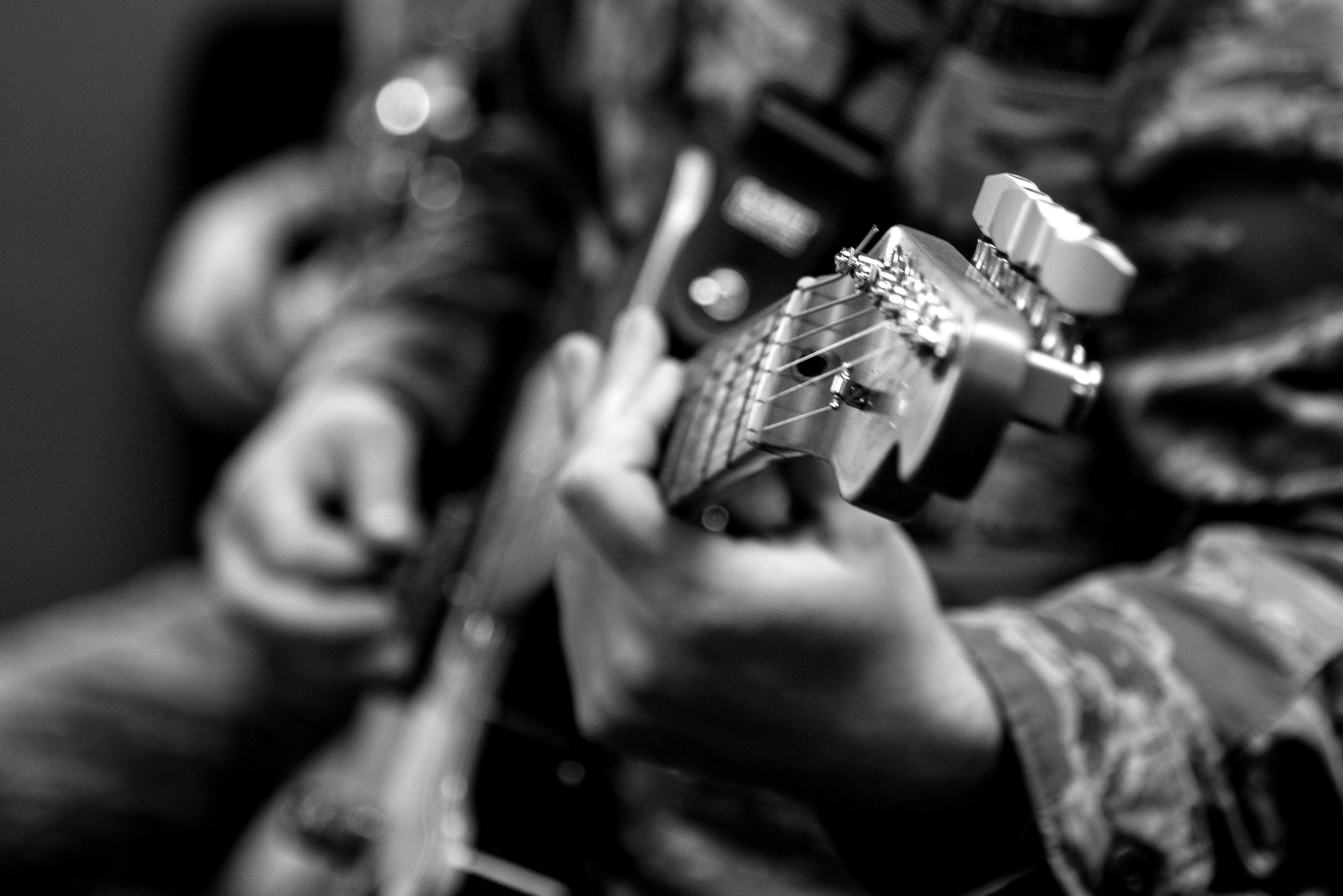In Part 1, we looked at dividing the fretboard up into string pairs in order play horizontally up and down the neck. In Part 2, we take the symmetry idea a little further by creating diagonal patterns across the string sets which combine 3NPS and 4NPS scales. If you haven’t looked into 4NPS scales, check out the introductory tutorial here, and if you want a more efficient way to learn 3NPS scales, grab our free eBook here. We’ll be working up at the 12th fret to make the initial stretches easier on your hands.
Branching Out
As we’re using the string sets from Part 1, we can take advantage by moving diagonally across the neck and retaining the symmetry of moving horizontally up and down the neck. Check out the E Natural Minor (E Aeolian) patterns below; they’re symmetrical across string sets with the addition of the missing b7 (in blue). Play the four notes on the D and B strings with one finger per fret. To come back down, simply reverse the pattern. You may want to start with the pattern up at the 12th fret. I like these patterns because they don’t sound like obvious scale patterns, and once you have the under your fingers, they become a powerful tool.
Your fingering for all these patterns should be (from low to high): 1, 2, 3 | 1, 2, 3 | 1, 2, 3, 4 | 1, 2, 3 | 1, 2, 3, 4 | 1, 2, 3 to avoid having your third finger rendered useless by trapping it in between fingers two and four as you may be used to doing with 3NPS scales.
Picking
Unless you have a rock-solid alternate or economy picking technique already, I’d always encourage you to find the best way for YOU to pick these patterns by trial and error as the ‘best way’ is always the best way for you.

If you’ve got huge hands, try the same pattern down at the nut, respecting the fingering above.

What follows is a selection of common scales laid out in combined 3NPS and 4NPS patterns.
First up is another useful minor mode: the Dorian scale, again in E. To use these scale shapes in other tonalities, simply shift the whole thing to the desired root note.

Next up is the Phrygian Mode:

Here are the patterns for the three major modes: Ionian, Lydian and Mixolydian, respectively:



And if you’re a fan of the Locrian scale, here’s the pattern for it:

We’ll throw in the Melodic and Harmonic Minor Scales, as well as the Lydian b7 Scale (a personal favorite), for good measure:

Harmonic Minor:

Lydian b7:

Bonus Arpeggios
We can strip down these patterns and turn them into arpeggios by removing the requisite notes. Here’s a minor 7 arpeggio:

These patterns remind me of Nuno Bettencourt’s approach to arpeggios where he often splits them in this way so that there are three notes on one string and two on the other.
Here’s the major 7 and dominant 7 versions, respectively:


There’s a lot of mileage to be gotten from these symmetrical ideas, and they’ll do wonders for your technique.
Learn more:
-Fretboard Motion: The Warp Zone (Part 3)
-The Advancing Improviser – Zonal Improvisation on Guitar



